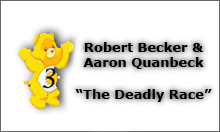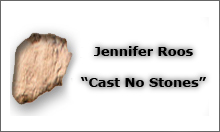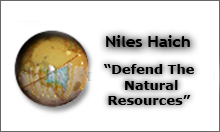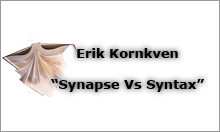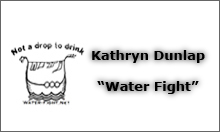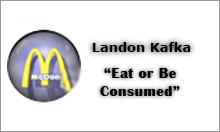Education Post 9/11
Ulmer
Why do I insist upon applying to practical states of affairs discipline materials that are conventionally associated with the "pure" arts and sciences? The reason must have something to do with my father. This feeling I have of needing to "pay for my space" (his motto) was inherited: a piece of North Dakota winter carried in my spirit like an inoperable bit of shrapnel from the wars of growing up. (Weishaus, 1998 Interview with Ulmer)Perhaps there will be no tests online, but riddles answered with the rabbit/duck of the unconscious, oscillating between the right to remain silent and the need to testify . . . . No learning without yearning. It is a learning that touches the dream navel, setting the world order dancing. (Ulmer, 2005, p. 209)
Brooks
In both the "Preface" and "Introduction" to Electronic
Monuments, Ulmer argues for the place of the MEmorial in education
post 9/11. Even though he has been arguing for the need to think through
the transition from literacy to electracy since the 1980s, and even though
he began to theorize and practice electronic monumentalization well prior
to 9/11, this event gave Ulmer (and us) a new and powerful frame for the
MEmorial assignment. As Ulmer (2005), Joyce Walker (2007), and National
Public Radio (2007) have all noted, informal but public memorialization,
and online memorialization in particular, have become prominent and valuable
means of responding to individual and collective losses. Ulmer (2005) and
Mauer (1996) have argued that one assignment in a first-year composition
course might become a kind of "MEmorial 101" assignment. Having
seen students work with the genre as a capstone project and as a graduate
seminar project, I can envision a place for the genre throughout the curriculum.
Through our collective analyses of peripherals and emblems, I hope that
we have suggested the kind of rhetorical and electrate thought and skills
this particular assignment seems to call for.
In "Exploring Post-Critical Composition," I reported that the
MEmorial seemed to provide a valuable alternative to the argumentative essay,
the proposal, or the commentary. The MEmorial as post-critical composition
does not require that the memorialist argue a side; instead, he or she suggests,
evokes, and tries to provoke attention to an abject issue. Aaron Anfinson
reported that he found this openness, and the process of discovery in the
assignment, particularly liberating. The world and the MEmorial can be messy
and inconclusive, more like life than an academic paper; the MEmorial as
genre may feel more like a riddle than a conventionalized, stable-for-now
form of expression.
The challenge of the MEmorial, and often Ulmer's work in general, is its
theoretical complexity and potentially un-engaged nature. The mystory, to
some, seems like self-indulgent new media expressivism. The MEmorial, to
some, might seem like a gesture towards politically and socially engaged
education, but ultimately self-contained or part of a very small, specialized
conversation. My students were skeptical about the the value of unbuilt
peripherals, particularly ones that seemed to have no potential of coming
to fruition. Ulmer may carry the North Dakota winter with him like a piece
of shrapnel; we live it, year after year.
To test the students' experience with the MEmorial and politically and socially
engaged education, I asked them to read Ellen Cushman's (1999) "Opinion:
Public Intellectuals, Activist Research, and Service Learning," and
Henry Giroux's (2007) The University in Chains, and then
locate their work in relation to service learning, activist research, critical
pedagogy, and democratic education. In class discussion, we settled on the
MEmorial as certainly distinct from traditional assignments but not critical
pedagogy; engaged with the world's problems (Problems B Us) but not fully
realized as activist research or service learning. We settled on the possibility
of this work functioning like the work of the public intellectual, but more
likely to circulate on Ulmer's listserv or, if lucky, through an academic
journal. But those were our collective conclusions--the ones I wrote on
the board (Figure 11). Below are their individualized reflections on the
MEmorial as a post 9/11 rhetorical act and form of education.
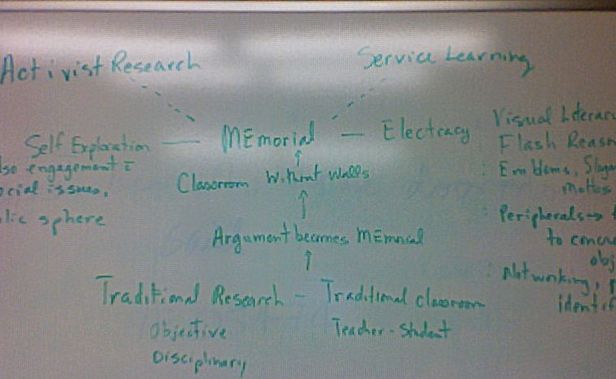
Figure 11: Mapping the MEmorial in relation to activist research and service
learning.
The Virtual Gardeners
For all members of the class, the MEmorial became a way to bring awareness to an issue that could easily be overlooked in a society now worrying more about national security and terrorism. The goal was to create an experience that goes beyond the typical academic paper and enters the public sphere. Aaron Quanbeck's comments reflect this point: "The creation of knowledge with the purpose of bringing about a positive change to our surroundings is certainly a worthwhile effort. 9-11 forced us to take a deeper look at our society and our place in the world. I think projects like a MEmorial can contribute to this self-reflection." Bob Becker also sees the MEmorial as a way for scholars to step outside their sheltered surroundings and engage the world beyond the classroom. "The MEmorial is an assignment that can help prepare students for this integrated, global world because it can help them to look for connections between people, ideas, and places. Cushman (1999) argues that an important responsibility of the new public intellectual is to be activist and integrated into the community."
This call to action, while not always fully realized in the projects, is nonetheless a component within the contexts of their creation. Kathryn Dunlap's comments concerning her MEmorial on water rights reflect these ideas of engagement, enlightenment, and perhaps even empowerment. "I think that the Western world has been in trouble (and only continues to dig itself deeper) by not understanding that our attitude towards those that we have been oppressing (whether we realize we have been or not) is that it is possible for us to raise them up. As a project I think the MEmorial has potential for sure."
Bringing awareness to the oppressed and forgotten is not a typical assignment for a university course, but one that others in the class embraced with their projects. Jennifer Roos was skeptical that a class "assignment" could truly reflect real-world service learning, but sees it having its place. "The strengths of the MEmorial are many. . . .The process can encourage students to 'publish' for a real audience and learn, as I did, different tools for communication in electracy. It also gives students a chance to interact with the global world and research problems of which they may or may not have been aware."
The idea of publishing for a real audience was also reflected in Landon Kafka's thoughts on the project, based on comments made by the course instructor. "Like Dr. Brooks stated in class," pointed out Kafka, "the average scholarly publication is read by four people. Four people isn't a very good impact if we are talking about service or activism." Kafka has hope that the class MEmorials will have a positive impact on the world outside the classroom. "From the examples we received for this project I think our class was able to extend the process of the MEmorial and if students from somewhere else, or even just people, stumble upon our website or projects I think we have succeeded in our quest."
Others see a major benefit of the MEmorial as being its ability to delve into subjects that typically would never be covered in a typical classroom. "I believe that the value of the MEmorial as an academic assignment lies in its flexibility," wrote student Erik Kornkven. "Our class is a good example of people being inspired to address a wide array of societal problems." Kornkven sees a need for this kind of wide response to the growing and complex problems in our changing world. "If we as educators do wish to use activism in our classrooms we must allow that activism to germinate within the psyche of our students, and not be placed there based on an educators agenda."
Niles Haich also see Ulmer's MEmorial as providing a unique venue to confront an audience that may be uninspired by academic papers and reports. "I would consider my MEmorial as being a step in advancing activism and service learning post 9/11--as too does Ulmer. It is Ulmer himself who views the MEmorial project as one which provides students and teachers with the means through which they are able to use the internet 'as a civic sphere' (Ulmer, 2005, p. xvii). I now have no doubt that the importance of that 'civic sphere' has only grown more powerful post 9/11."
The students' comments reflect the idea that they see the MEmorial as one possible way of bridging the gap between scholarly endeavors and service learning. They seemed to appreciate the concept of engaging with an issue that they saw as a concern. This flexibility and inspiration also carried through with each stage of the MEmorial and offered them opportunities to draw upon their own creativity. The result was a project that for many in the class was much more memorable, and perhaps impactful to them and others, than a traditional written assignments.

